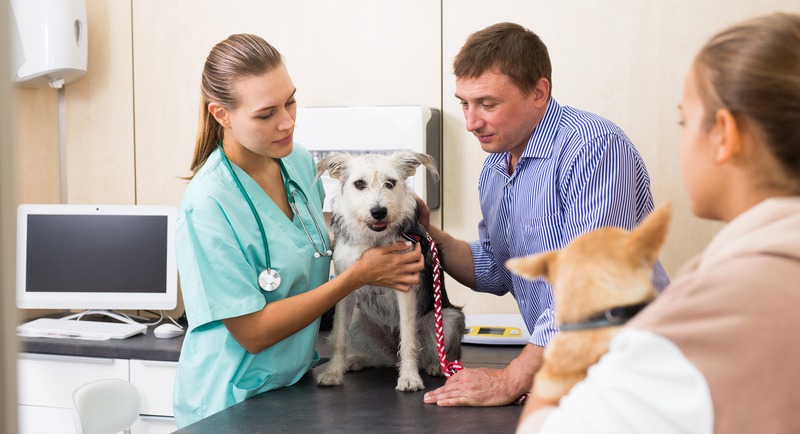We would do anything to keep our pets healthy, just like we do for people. Vet care has improved a lot, even in treating pet sicknesses. Iodine therapy is a new way to help cats with a common thyroid problem. However, vets need to do careful lab tests to see if this is the right choice for your pet. Can these tests tell what will happen to your pet’s health? Let’s take a closer look at how this all works.
Do Lab Tests Hold the Key to Treatment Success?
It’s the million-dollar question for every pet owner whose furry companion needs medical attention: will the treatment work? Specifically, when it comes to iodine therapy – a common treatment for hyperthyroidism in cats – the ability to predict its success could alleviate much of the stress and uncertainty that comes with the decision to proceed.
How Does Iodine Therapy Work?
Before we jump into lab tests, let’s put our paws on what iodine therapy is exactly. In a nutshell, hyperthyroidism is a condition where the thyroid gland goes a little haywire, producing too much thyroid hormone. This can lead to a host of issues for your kitty, including weight loss, increased appetite, and restlessness. Iodine therapy, specifically Radioactive Iodine Therapy (RAI), is a targeted treatment that zaps those overactive thyroid cells without harming the surrounding tissues.
How Does Lab Tests Work?
Now, here’s where our trusty vet lab comes into play. Vets use a variety of tests to look inside your pet’s health and make informed decisions regarding treatment. Some of these tests include:
-
Thyroid hormone levels: Checking the amount of thyroid hormone in the blood can indicate how severe the hyperthyroidism is.
-
Kidney function: Since the kidneys and thyroid work closely together, it’s crucial to make sure the kidneys are up to snuff before starting RAI.
-
Blood count: A complete blood count can provide a general snapshot of your pet’s health and help detect any underlying issues.
-
Imaging tests: Tests like ultrasounds or a CT scan for dogs in Springfield, VA, can visualize the thyroid gland and surrounding structures. (Though less common for cats, it’s worth noting for our canine pals who might also need imaging.)
Can these tests predict the success of iodine therapy, though? In some ways, yes. By establishing a baseline of your cat’s overall health, these tests can help your vet determine if your cat is a good candidate for RAI. They can assess the safety of the procedure and potentially the effectiveness based on the severity of the disease.
Factor in Individual Variability
However, this is a big issue; every cat is different. Just like people, individual responses to treatment can vary. Those initial lab tests can only account for some variables in your cat’s unique biological makeup. Subsequent follow-up exams and tests are often necessary to monitor how well the feline hyperthyroidism treatment is working.
Predictive Power and Limitations of Laboratory Tests
Imagine lab tests are like a weather forecast. They can tell us if it’s likely to rain, but they can’t guarantee we won’t see a few unexpected sunbeams (or the odd storm cloud, for that matter). It’s the same with predicting treatment outcomes – there’s a general expectation based on stats and medical knowledge, but there’s also room for surprises.
So, while lab tests are critical and can give us a good indication of what’s to come, they’re not fortune tellers. They can guide us to make informed decisions, but they can’t paint a complete picture of the future.
Adding It Up
Now that we’ve looked at the role of lab tests, can they confidently predict iodine therapy outcomes for hyperthyroid cats? The short answer is that they help, but they need to predict with 100% certainty.
The Real-world Application
Here’s how the process typically goes in the real world:
-
The vet conducts a thorough exam and a series of lab tests to understand the cat’s condition.
-
Based on the results, they can tell if the cat is a suitable candidate for RAI.
-
The treatment plan is mapped out, factoring in the lab test findings and the cat’s health history.
-
After the treatment, more tests are performed to see if the therapy has hit the mark.
-
Continual monitoring and adjusting based on ongoing lab work and the cat’s response to treatment.
Through careful monitoring and initial vet lab work, vets can get a reasonable idea about what to expect. But as any seasoned vet will tell you, animals have a way of keeping us on our toes.
Final Thoughts
When we’re trying all we can to help our pets, understanding the process and knowing that we’re making the most informed decisions possible can bring peace of mind. Lab tests are an essential tool in that process, providing a wealth of information that, while not foolproof, is invaluable for developing effective treatment plans. So, while we can’t predict the future with absolute certainty, we can rest assured that with quality lab testing, we’re doing our very best for our furry family members. Trust your vet, ask questions, and here’s to hoping for the best outcomes for your pets.

